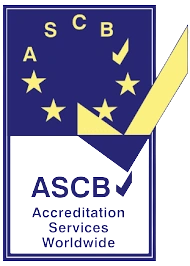Table of Content
Introduction
Inclusive language at workplace ensures that communication is respectful, acknowledges diversity, and fosters a positive work environment.
With the rise of digital tools like uKnowva HRMS, promoting inclusive language has become more manageable.
Unlock new ways to include strategic and inclusive communication in your organisation. Try uKnowva HRMS and see the difference yourself.

5 Ways to Adapt Inclusive Language at Workplace
- Understand the Importance of Inclusive Language
Inclusive language helps create a workplace where the workforce receives their due value. Teams keep on encouraging and motivating each other.
They remain connected through a common medium like a social intranet for a free flow of communication that induces mutual respect.
Such communication also decreases the scope of misunderstanding and reduces discrepancies.
With the right choice of words, one promotes equity and inclusion, which helps in enhancing team collaboration and employee satisfaction.
- Adopt Gender-Neutral Language
Gender-neutral language avoids assumptions or stereotypes about gender and recognises everyone’s identity.
For instance, substitute gender-specific words like "chairman" with "chairperson", “manpower” with “workforce”, “salesman” with “salesperson”, “housewife” with “homemaker”.
Words like these prevent marginalisation and promote gender diversity at workplaces.
Gender neutral words promote giving each other due respect and attention for the contribution towards achieving common team and organisational goals.
Such mindful initiatives eventually lead to higher productivity for each team member and employee.
In fact, organisations can run an awareness campaign on a social intranet like ours. They can run a # or hashtag based on gender-neutrality or promotion diversity with such keywords.
That is easier to spread the knowledge because our social intranet lets you find the content on the platform based on viral tags.
- Be Mindful of Cultural Sensitivities
Cultural sensitivity means being conscious and respectful towards different cultures and practices.
Refrain from using phrases that may carry cultural biases or carry on stereotypes. Instead, use language that acknowledges and respects cultural diversity.
Implement cultural sensitivity training through an e-learning platform.
One leverages HRMS tools like ours to track and measure the level of effectiveness of these training sessions.
- Incorporate Accessibility Considerations
Inclusive language at workplace should align with everyone in the organisation, even those having special needs.
This includes using terms like "person with special needs" rather than "disabled person".
More than that, take accessible feature examples of our software. To boost accessibility in organisation working with special people with extensive needs, we help them:
- Tweak the font and icon size of their instance when going about their day.
- Have automated logins and logouts to assist the person working with visual impairment.
- Toggling in text-to-speech features is easy on our tool for employees with visual impairment limitations.
This makes their workday smooth as and when they move the cursor around, wanting to click and execute any daily HR or employee related transactions on the portal.
- Giving access to log in and log out from anywhere, not necessarily required to show up in the office, it is not possible.
This improves each person’s productivity despite certain limitations.
- A decentralised document repository makes it easy for everyone to fetch the data literally from anywhere, making the information accessible to all the employees with or without disabilities.
- Foster an Inclusive Environment Through Training
Regular training on inclusive language helps keep the team updated on best practices and learn new age skills.
These trainings should be communal and involve real-life situations to make it relevant and experiential.
Organise regular inclusive language workshops using HRMS’s learning management system.
Track real-time progress to know the learning effectiveness of such sessions and help employees break the barrier for purposeful engagement.
Bonus Points For Promoting Inclusive Language at Your Workplaces
- Encourage Candid Discussions and Feedback
Creating an open environment allows employees to raise their concerns and provide feedback on language use.
Encourage team members to speak up if they find any language, or words offensive, and take their feedback seriously.
Leverage our 360-degree feedback and employee satisfaction surveys to gather judgements about the inclusiveness of workplace communication.
Use this data to make adjustments to implement inclusive vocabulary in daily communication actively.
- Implement Inclusive Language on Online Platforms
Digital communication usually lacks the subtlety of face-to-face interactions, making the thoughtfulness of the words used in online messages pivotal. Endeavour for clarity and respect is thus essential to streamline digital uniformity.
uKnowva’s social intranet empowers you to make notes in the personalised to-do notes or create a document of the inclusive language with an open access. This supports the use of appropriate language in all the digital communications happening on the portal.
Conclusion
The power of including Inclusive language at workplace helps in bringing higher levels of productivity and job satisfaction among people from different domains. This will increase cultural diversity and the workforce will feel motivated and seen.
To inculcate this as an active practice, you need an interactive, holistic, accessible, and purposeful communication cool.
A tool like uKnowva HRMS bridges the communication gap, allowing users to:
- Tag their teammates in every text message to resolve conflicts in a snap.
- Appreciate them for their contributions.
- Wish them on their special days like birthdays and anniversaries.
- Reward them with praises and announcements on clickable banners.
- Toggle multilingual features to make the communication relatable, purposeful and inclusive.
- Tweak the size of the font and icons to help users read better and communicate without confusion.
All this and more makes inclusion an integral part of an organisation.
Do you feel this is missing from your team and need to implement this right away?
FAQS on Inclusive Language at Workplace
-
Why is inclusive language important in the workplace?
Inclusive language helps foster a positive work environment, enhances communication, and reduces the risk of offending or alienating colleagues.
It also aligns with values of diversity and inclusion, which can improve team cohesion, employee satisfaction, and overall productivity.
-
What role do policies and training play in promoting inclusive language?
Policies and training help establish clear expectations for language use and provide guidance on best practices.
They ensure that all employees understand the importance of inclusive language and have the tools to apply it consistently.
-
Can you give examples of inclusive vs. non-inclusive language?
Non-Inclusive: "Guys" (when addressing a mixed-gender group)
Inclusive: "Team" or "Everyone"
Non-Inclusive: "He" as a default pronoun
Inclusive: "They" as a gender-neutral pronoun or using the person’s preferred pronouns
Non-Inclusive: "Crazy" or "insane" to describe a project
Inclusive: "Challenging" or "difficult"













